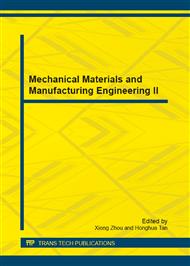p.3
p.9
p.14
p.20
p.26
p.31
p.37
p.43
Combined Effects of Gamma-Ray Radiation and Repeated Hot-then-Cold Stresses on the Springback Degradation in Invar Alloy
Abstract:
In this paper, we report the characterization of springback degradation of an Invar sheet with a combination of gamma-ray irradiation and repeated hot-then-cold stresses. The springback factor value of fresh Invar without radiation shows a linear increase with the number of hot-then-cold stress cycles. Continuous springback degradations are observed as the number of hot-then-cold stress cycles reaches 100. When the Invar sheet is subjected to gamma-ray irradiation, the springback factor is greater than that of the repeated hot-then-cold stressed samples. After applying the repeated hot-then-cold stresses to the post-irradiated Invar sheets, the springback factors are first restored to the value of fresh Invar, and then revert to an increasing trend. Our previous X-ray diffraction (XRD) analysis excluded the crystalline structural changes in the post-irradiated Invar. It is believed that the radiation-induced defects, which are closely related to the springback degradation, are possibly annealed during the first 20 hot-then-cold stress cycles. These cycles ultimately dominate the springback behavior of the stressed Invar sheets.
Info:
Periodical:
Pages:
14-19
Citation:
Online since:
December 2012
Authors:
Keywords:
Price:
Сopyright:
© 2013 Trans Tech Publications Ltd. All Rights Reserved
Share:
Citation:


